Easy to Use List of Adaptive Behavior Skills
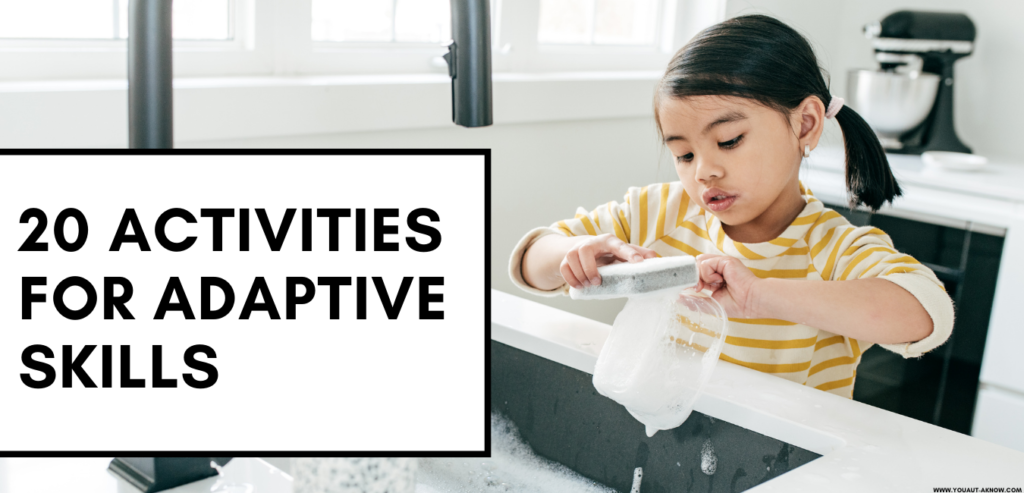
Are you teaching adaptive skills in your classroom? Teaching students basic adaptive skills is essential to their life outside of school. These 20 hands on activities for adaptive skills are some of my favorites! In my classroom, I focus on 6 main areas of adaptive and daily living skills. Here's where we focus in our classroom:
- Household
- Community
- Money
- Time
- Clothing
- Food
- Body Parts
Household Activities
Teaching students household vocabulary and determining where things belong is an essential skill. Setting them up for helping with chores and living a successful life starts with these skills. These are 3 adaptive skills activities I use to practice household vocabulary and skills.
- Laundry Sort
Sorting clean and dirty clothes is a skill students need to live independently. This activity is a great way to practice sorting clothing. You can also grab some old clothing or head to your local thrift shop to grab some things. Then purposely dirty some up for students to practice sorting clean and dirty clothing. - Furniture Sort
Determining where items belong in a home helps students plan for independent living. This activity allows students to place furniture in the rooms they belong. Organizing and planning for a home helps students engage in chores at home as well. - Room Decorating
This room decorating activity continues to build on the furniture skills students have learned. They are learning the vocabulary for items in the home as well as following simple directions during this task. Students look at the key to determine which items need to be included in the room.
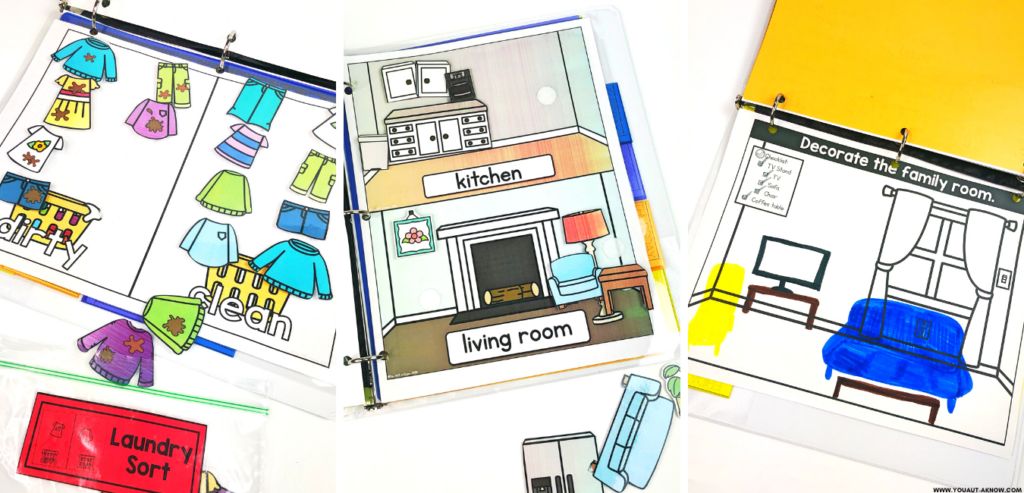
Knowing who lives and works in a community is essential for students. Students need these skills so that they can interact and live independently. Determining who can help you in the community helps students build daily living skills. These 2 adaptive skills activities are help students learn more about their community.
- Community Helper Matching
In this activity, students practice matching community workers to their place of employment. This helps students determine where they would go if they need help in their community. - Where Do You Buy It?
Teaching students where they go to buy specific items is important. If you want to buy groceries you would not be going to the hardware store. Identifying which items you want to buy and where you can purchase them helps students build skills to help them live independently.
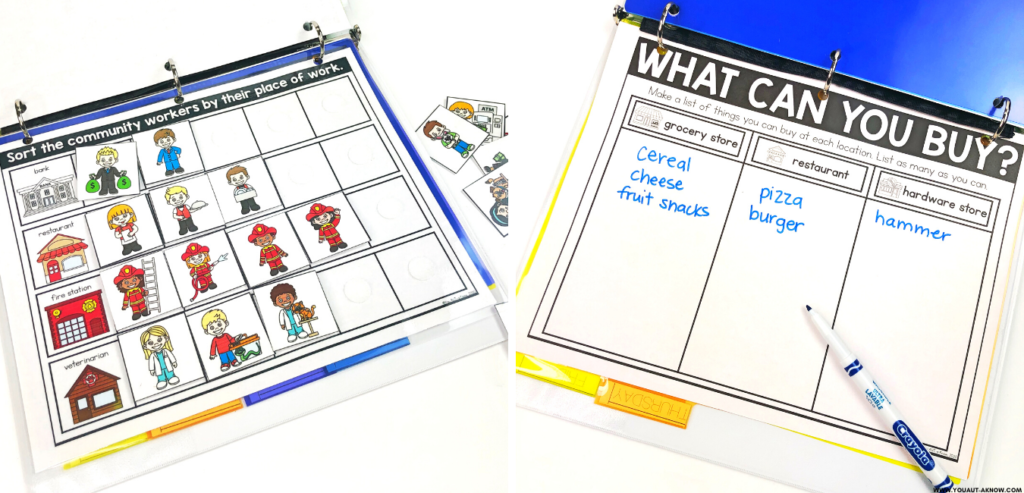
Money Activities
Money skills are essential in Independent Living. You need money to do just about anything in our worlds. Understanding money and determining how to purchase items is a skill that helps students interact in their community and live independently. These 3 adaptive skills activities range from identifying and counting money to determining how much money you would need to purchase items.
- Money Memory
There's nothing quite like a game to help you start building money skills. Money memory allows you to have students match coins by picture, name, or value. Identifying money is the first step in building the skills needed to make purchases in the community. - Dollar Bill Counting
When students interact in the community they will need to make purchases. Counting out dollar bills it's a great way to help students learn to make independent purchases. In this activity students count bills to match a target amount. - Let's Go Shopping
When students enter the community and start making purchases they'll need to know how to provide the correct amount of money. In this activity, students will be given a target value from $0 to $20. Then they count out dollar bills to cover their purchase. Practicing the dollar up method helps students understand how to pay with an appropriate amount of money
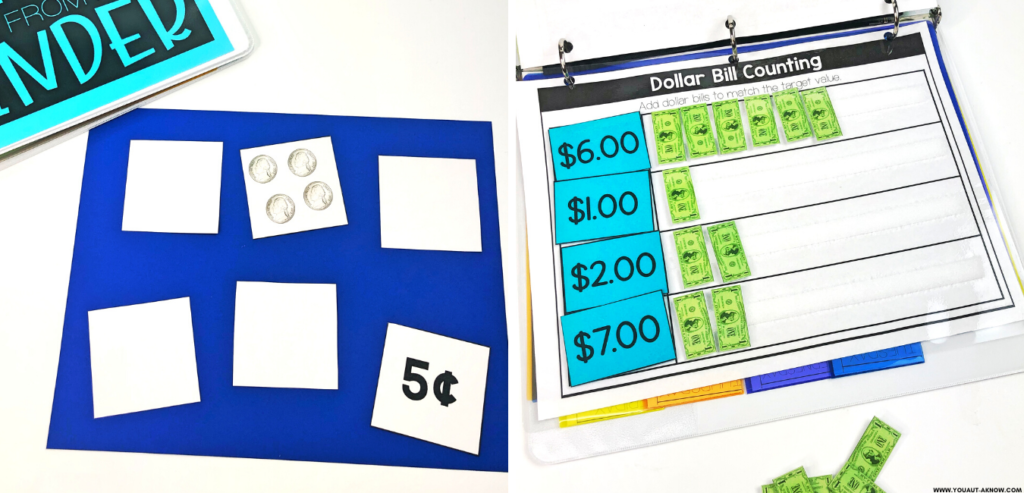
Time Activities
Telling time is an important skill. Knowing when certain activities happen and being able to read a clock helps students participate in their daily life. If an event starts at 2:00, you don't want to show up at 5:00. These two simple activities are a great way to practice time skills in the classroom.
- Time of Day
Determining win activities happen throughout the day is the first step in learning time skills. If students can determine that dinner happens in the evening, they are less likely to wake up and eat dinner. Building this awareness of time throughout the day is a stepping stone into telling time on a clock. - What Time Is It?
Learning to tell time to practice and repetition. The matching boards in this activity help students get independent practice and telling time. Once students are able to tell time it helps them in the classroom and in their community.
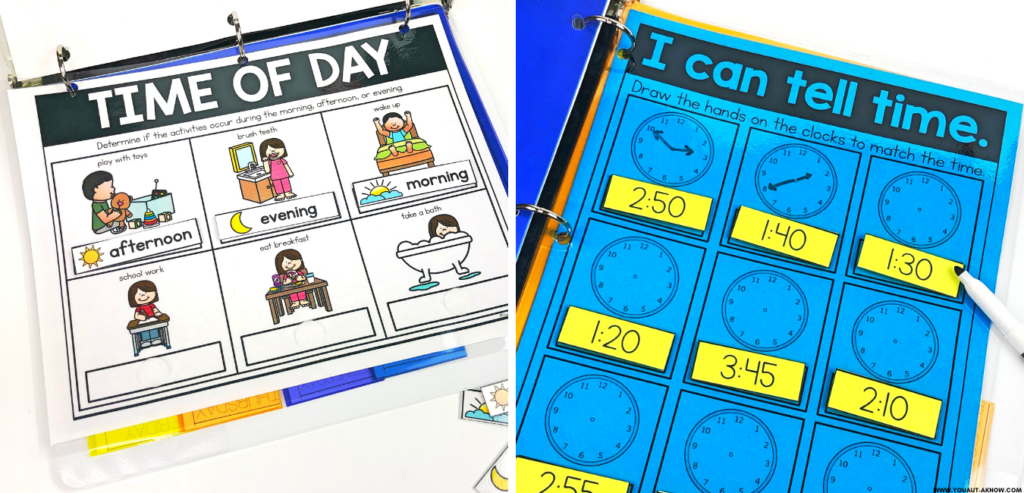
Clothing Activities
Dressing yourself is an important skill. These five clothing activities help build clothing vocabulary. They also help students determine which clothing is appropriate for different occasions.
- Getting Dressed
This simple activity helps students understand where clothes go on the body. Students Place clothing on the appropriate body parts to dress the kid. This help students understand where they put clothing on their own body. - Clothing Puzzles
These clothing puzzles are a great way to practice clothing vocabulary with students. Students will solve the puzzles to build different pieces of clothing. - Packing Suitcases
Packing suitcases is an activity for students to practice determining which clothes are appropriate for different settings. Each suitcase has a different location and students draw or sort clothing that they should take to each place. For example, they would determine that taking a bathing suit to the snow may be inappropriate, but taking it to the beach is perfect! - Clothing Roll and Cover
This game is a fun way to generalize clothing vocabulary. Students assembled the dice and roll to find different kinds of clothing. The clothing doesn't always match the picture on the dice so students have to know that a shirt is a shirt no matter what it looks like. - Clothing Scavenger Hunt
This game is tons of fun. Students will roll two dice to find a color and a clothing item. Once both days have been ruled students can search the classroom or their home for a matching clothing item. For example if they roll green and socks, they will find a pair of green socks.
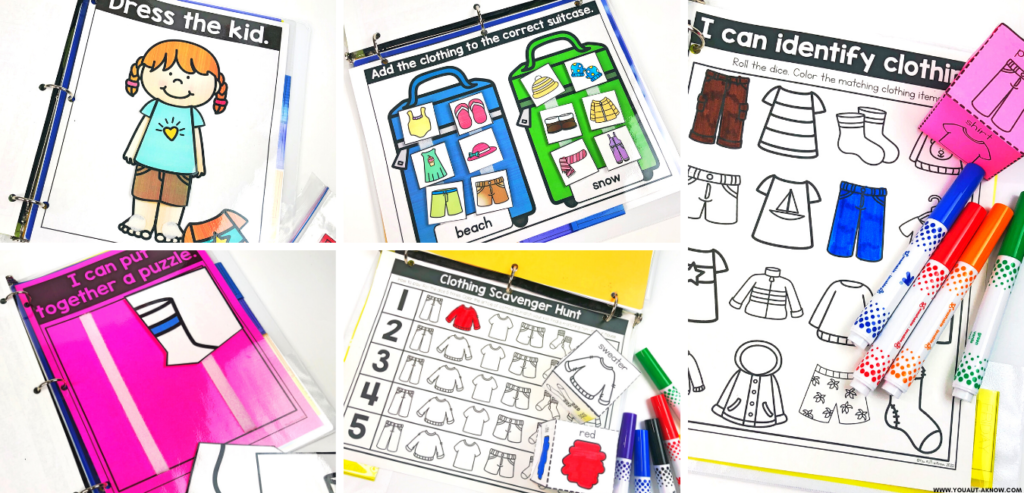
Food Activities
Building food and nutrition skills is important. If I could eat ice cream for every meal I probably would. Of course, that is not the most healthy approach. That's why learning about food, where you can buy it, and how you need to store it is important for students to learn.
- Meal Sorting
In this simple activity, students learn what types of foods they should eat at different times of the day. Students sort food items between breakfast, lunch, and dinner to determine when they should be eaten. - What Do You Need?
This activity is important to get students to start thinking about cooking. Students are given a target item. They then need to decide what things they would need to purchase at the store in order to make the meal. - Where Does It Go?
Once students start thinking about grocery shopping and making meals, they need to start planning how to store food in their home. This activity helps students sort different items between storage in a refrigerator or a cabinet.
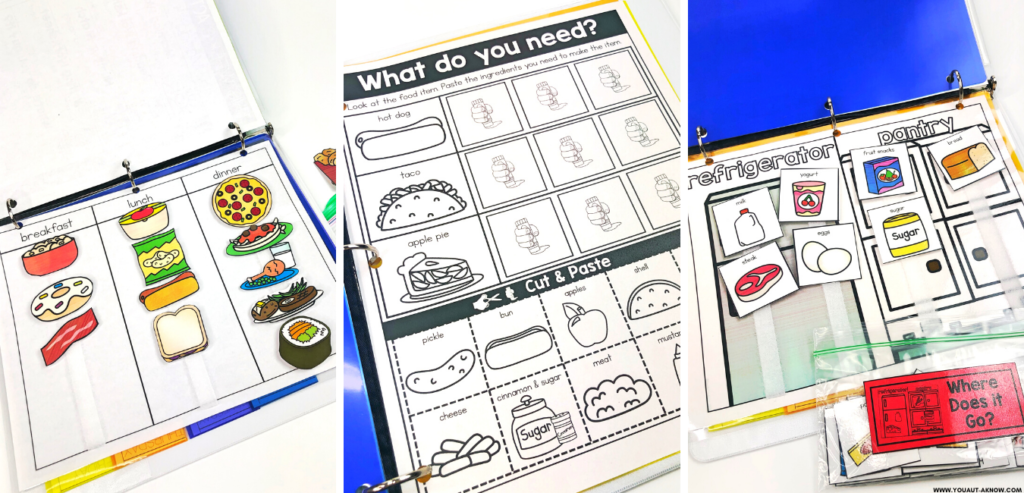
Body Parts Activities
Learning to identify body part is important. Imagine having a headache and not being able to identify where you are feeling pain. When students learn to identify body parts they are better able to communicate about injuries and pain. This helps them meet basic needs in their daily living.
- Body Part Game
In this game, students will draw a card and color the same body part on a coloring page. With a variety of people and animals this game can be played multiple times for students to understand and identify body parts. - Roll and Draw a Person
As students start building fine motor skills, one of the first things I teach them is how to draw a person. This means that they start drawing the parts of a body in order to tell stories or draw pictures. Learning to draw people also correlates to identifying body parts on themselves.
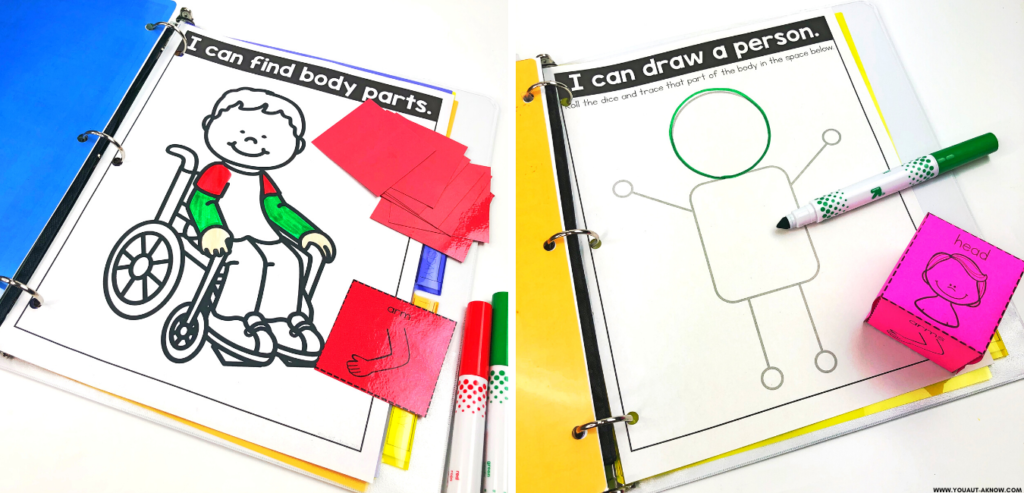
These 20 adaptive skills activities help your students learn about household items, community members, money, time, clothing, food, and body parts. The activities I shared were developed for distance learning, but they are a great addition to any classroom centers and can even be used as homework.
Want to grab these 20 activities for your classroom? You can grab them here.
Source: https://youaut-aknow.com/20-activities-for-adaptive-skills/
0 Response to "Easy to Use List of Adaptive Behavior Skills"
Enviar um comentário